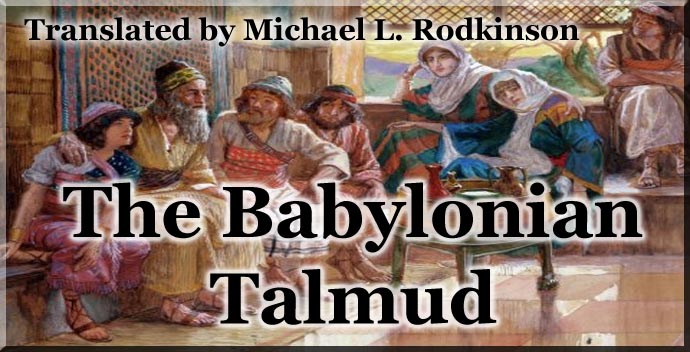
The Babylonian Talmud
By Translated by Michael L. Rodkinson
Book 10 - Volume 19
Volume II: Historical and Literary Introduction to the New Edition of the Talmud
Table of Contents
|
||||||||||||||||||||||||||||||||||||||||||||
 |
 |
|||||||||||||||||||||||||||||||||||||||||||
|
|
||||||||||||||||||||||||||||||||||||||||||||
Book Navigation
Title Page
Table of Contents
Volume I: History of the Talmud
Preface
Table of Contents
Introduction
► Chapter 1
► Chapter 2
► Chapter 3
► Chapter 4
► Chapter 5
► Chapter 6
► Chapter 7
► Chapter 8
► Chapter 9
► Chapter 10
► Chapter 11
► Chapter 12
► Chapter 13
► Chapter 14
► Chapter 15
► Chapter 16
► Chapter 17
► Chapter 18
► Chapter 19
Appendix A
Appendix B
Volume II: Historical and Literary Introduction to the New Edition of the Talmud
Table of Contents
Part 1
► Chapter 1
► Chapter 2
► Chapter 3
► Chapter 4
► Chapter 5
► Plate facing page 48
► Chapter 6
► Chapter 7
► Chapter 8
► Chapter 9
► Chapter 10
Part 2
► Chapter 1
► Chapter 2
Part 3: Method of Translation
► Plate facing page 100
Part 4: Criticism
Appendix C
Part 5: The Arrangement of the Six Sections in Their Sixty Tracts
-
Site Navigation
 Home
Home What's New
What's New Bible
Bible Photos
Photos Hiking
Hiking E-Books
E-Books Genealogy
Genealogy Profile
Free Plug-ins You May Need
Profile
Free Plug-ins You May Need
 Get Java
Get Java.png) Get Flash
Get Flash Get 7-Zip
Get 7-Zip Get Acrobat Reader
Get Acrobat Reader Get TheWORD
Get TheWORD